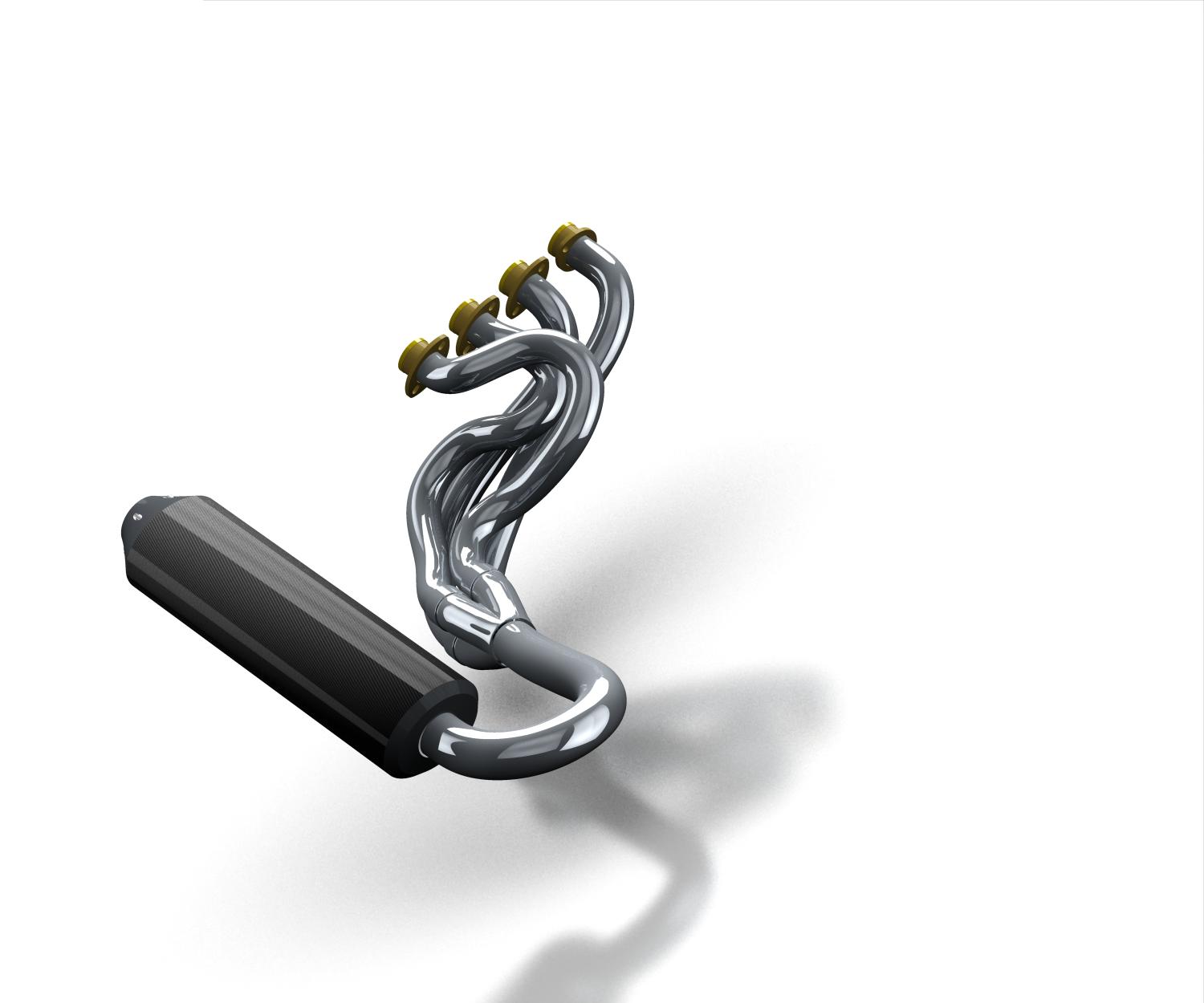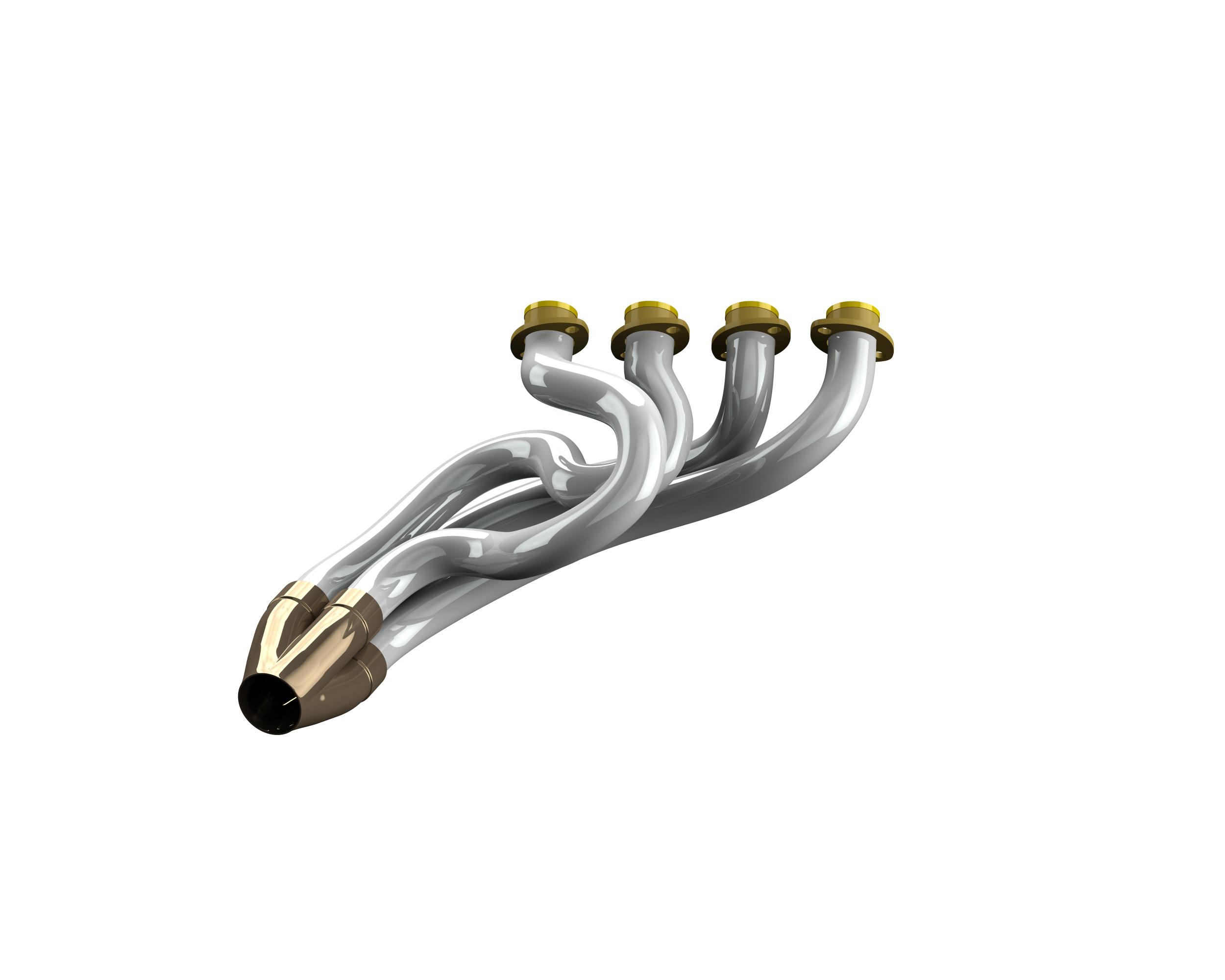Simulation of an exhaust system
Introduction
An exhaust system is piping used to guide reaction exhaust gases away from a controlled combustion inside an engine or stove. The entire system conveys burnt gases from the engine and includes one or more exhaust pipes. Depending on the overall system design, the exhaust gas may flow through one or more of:
- Cylinder head and exhaust manifold
- A turbocharger to increase engine power
- A catalytic converter to reduce air pollution
- A silencer to reduce noise.
An exhaust pipe must be carefully designed to carry toxic and noxious gases away from the users of the machine. Indoor generators and furnaces can quickly fill an enclosed space with poisonous exhaust gases such as hydrocarbons, carbon monoxide and nitrogen oxides if they are not properly vented to the outdoors.
Also, the gases from most types of machine are very hot; the pipe must be heat-resistant, and it must not pass through or near anything that can burn or can be damaged by heat.
Motorcycle exhausts come in many varieties depending on the type of engine and its intended use. A twin cylinder may flow its exhaust into separate exhaust sections, such as seen in the Kawasaki EX250, or they may flow into a single exhaust section known as a two-into-one 2-1.
Larger engines that come with 4 cylinders, such as Japanese supersport or superbikes (such the Kawasaki ZX series, Honda's CBR series, Yamaha's YZF series, and Suzuki's GSX-R series) often come with a twin exhaust system. A "full system" may be bought as an aftermarket accessory, also called a 4-2-1 or 4-1, depending on its layout. In the past, these bikes would come standard with a single exhaust, as seen on the Kawasaki ZX-6R 2000 and 2001 models. However, EU noise and pollution regulations have generally stopped this practice, forcing companies to use other methods to increase performance of the motorcycle.
Problem description
In the following we will analyze the exhaust system from a Suzuki GSX R600 cc; the geometry is taken from grabcad.com, the link is given below.



We will simulate the flow up to the muffler.
Mesh generation
ANSYS provides a workbench that helps transferring data from one software to another with no user intervention; the system is very stable and rarely fails. For the CFD simulation the workbench provides a system similar to what is seen below; the user must enter every section setup each step of the analysis.
For instance, the Geometry opens up the program Design Modeler; this is used to simplify geometry and extract the flow domain.
Domains can be merged in one single domain; this makes the analysis easier to setup and is recommended if there are no interfaces between domains.
With this geometry, we setup meshing controls: size, boundary layers (inflation), boundary condition (named selections).
The final mesh looks like this:
The mesh has cells and nodes. To avoid accuracy problems the mesh must be checked; we must avoid using highly skewed cells. The cell angles must be kept between and ; the minimum orthogonal quality be and the maximum skewness should be .
ANSYS Meshing permits plotting the mesh quality directly on the created cells.
Boundary conditions and initial fields
The domain has four inlets and one outlet:
I assumed a normal velocity of and a temperature of at inlets; the fluid will flow directly into atmosphere and therefore the pressure at outlet is set to zero; all walls are adiabatic.
Case control
The fluid is air; the density changes only with temperature; therefore the energy equation must be solved also.
For this analysis we use Realizable turbulence model with enhanced wall treatment; all schemes are set to second order upwind; the algorithm for pressure - density coupling is set to SIMPLE.
Results
After 1300 iteration the following residuals are reported:
- continuity
- x-velocity
- y-velocity
- z-velocity
- energy
- k
The pressure distributions in the exhaust system:
Samples of the velocity at the inlets:
Free-streams colored by velocity:
It can be seen that the maximum velocity is about ; that means the incompressible assumption is not valid and the analysis must be continued with a compressible one starting from these values.